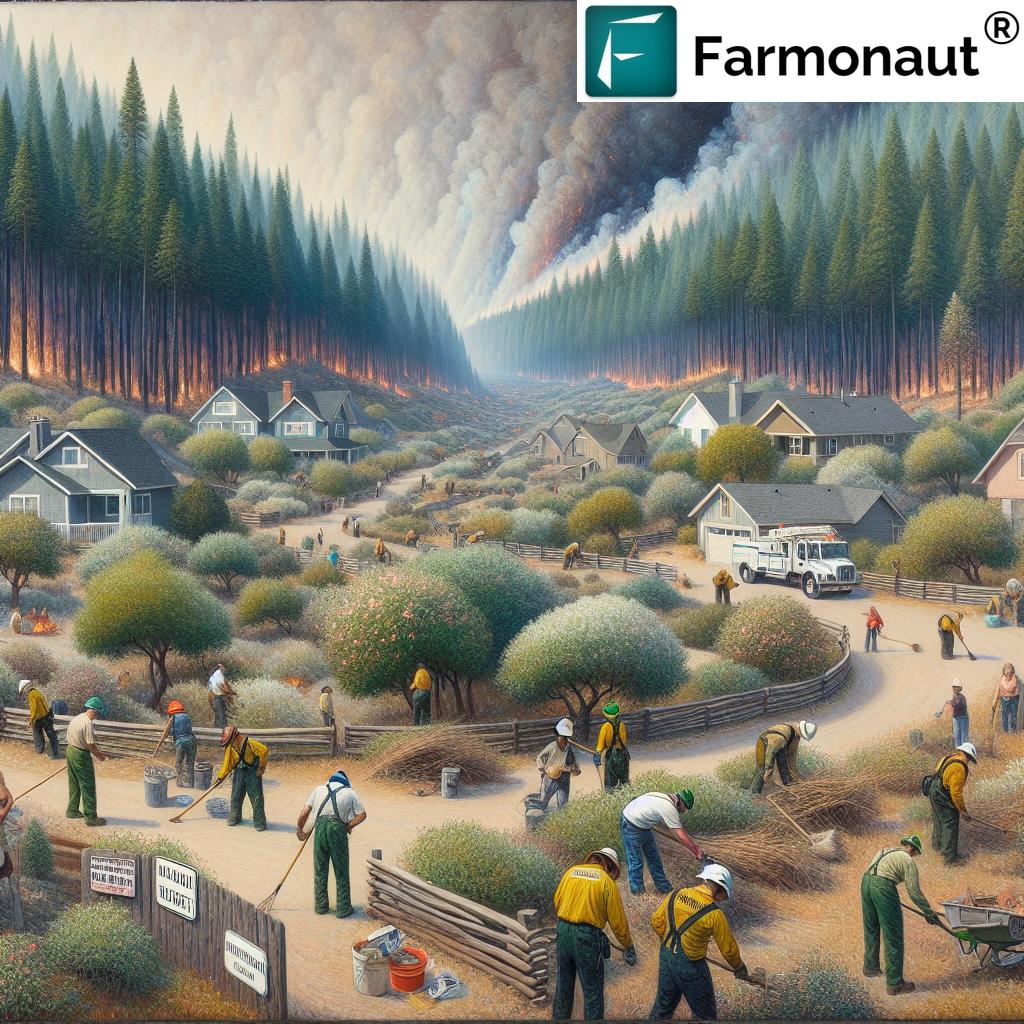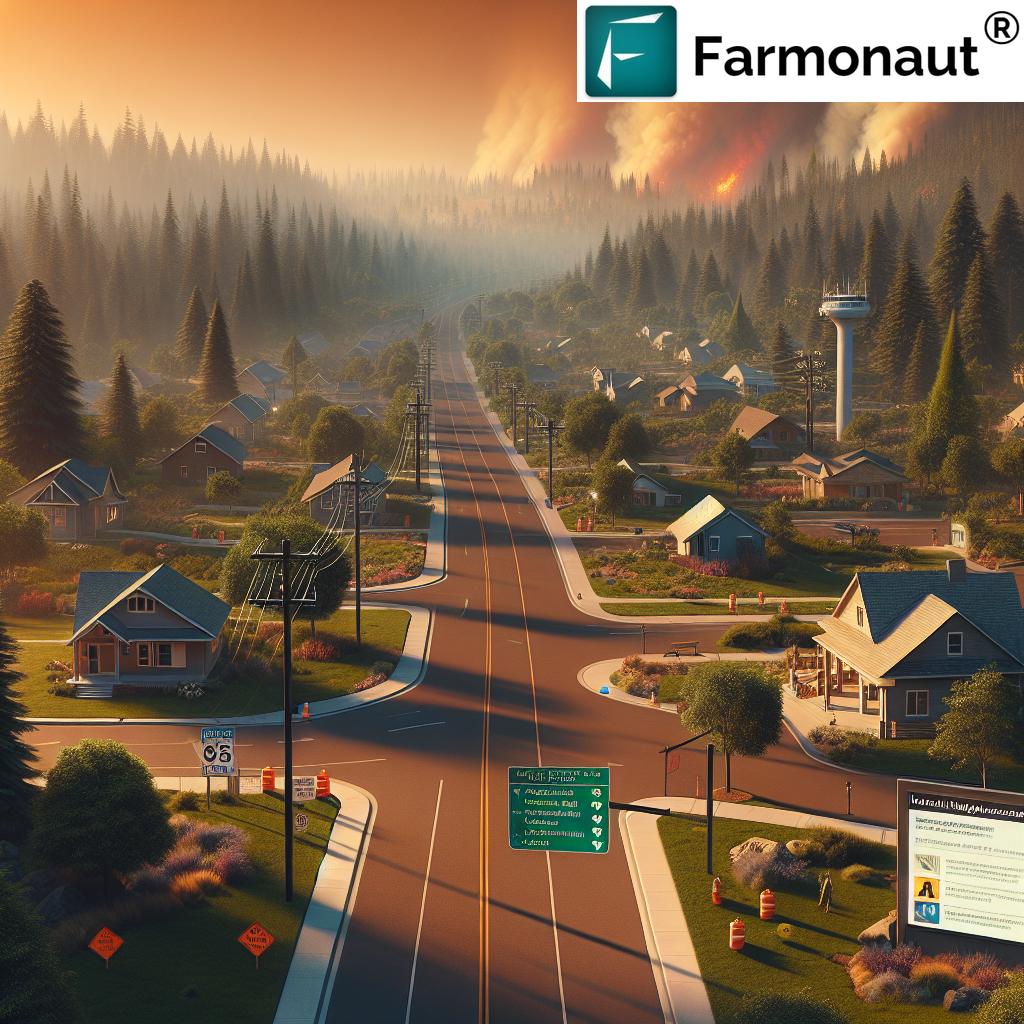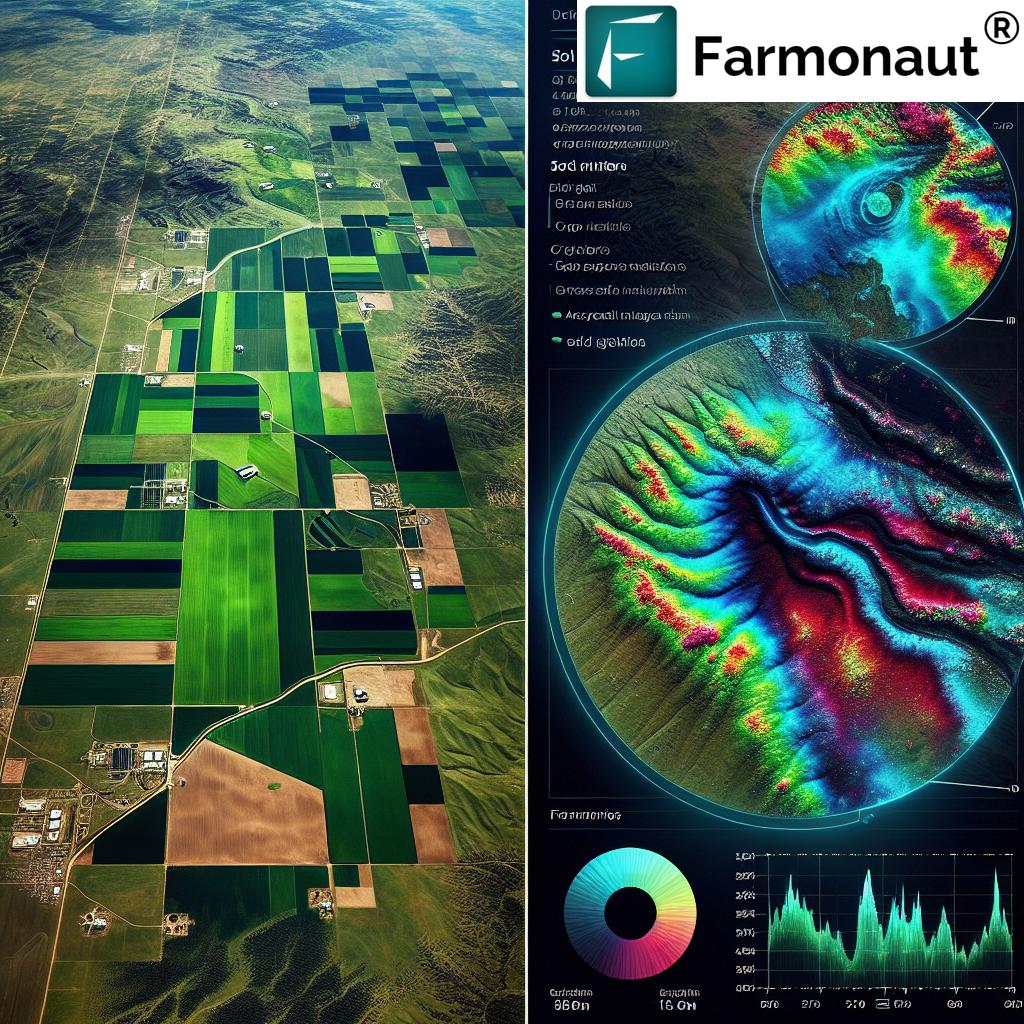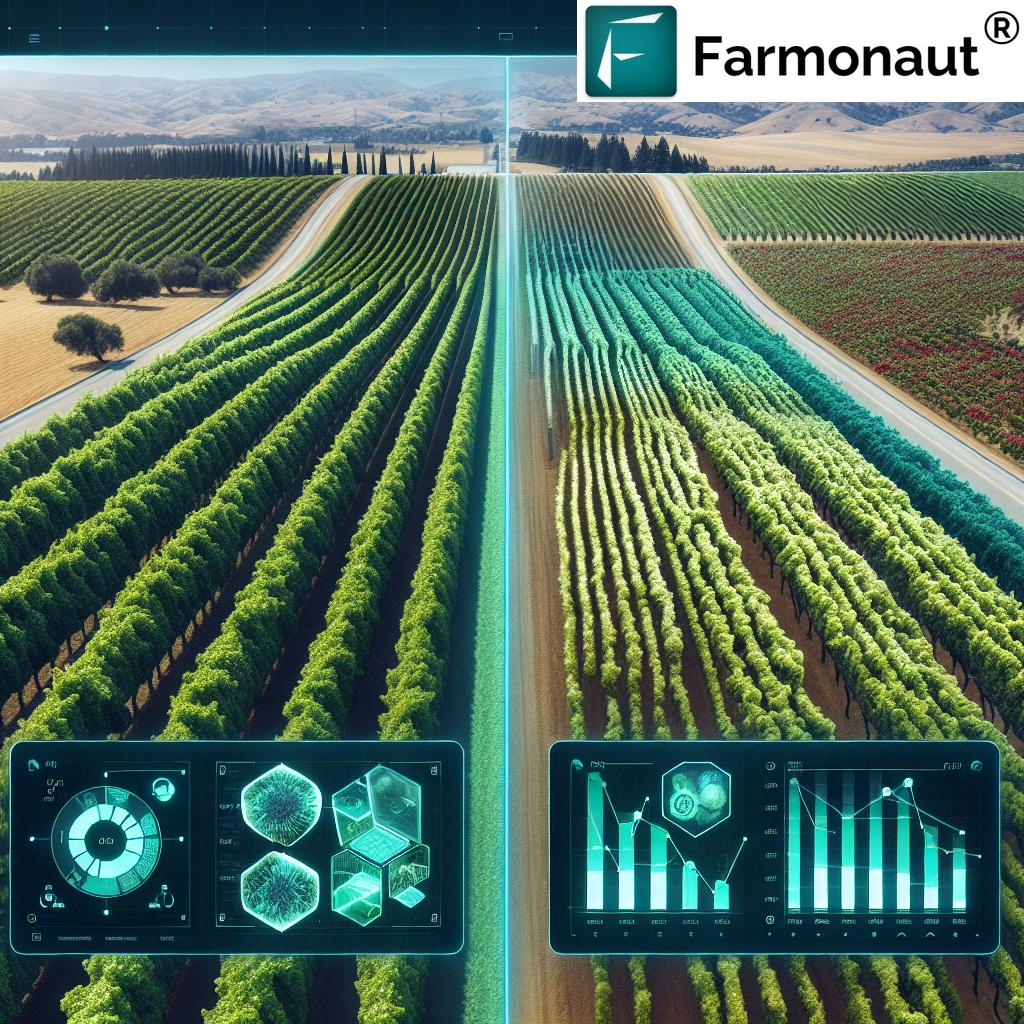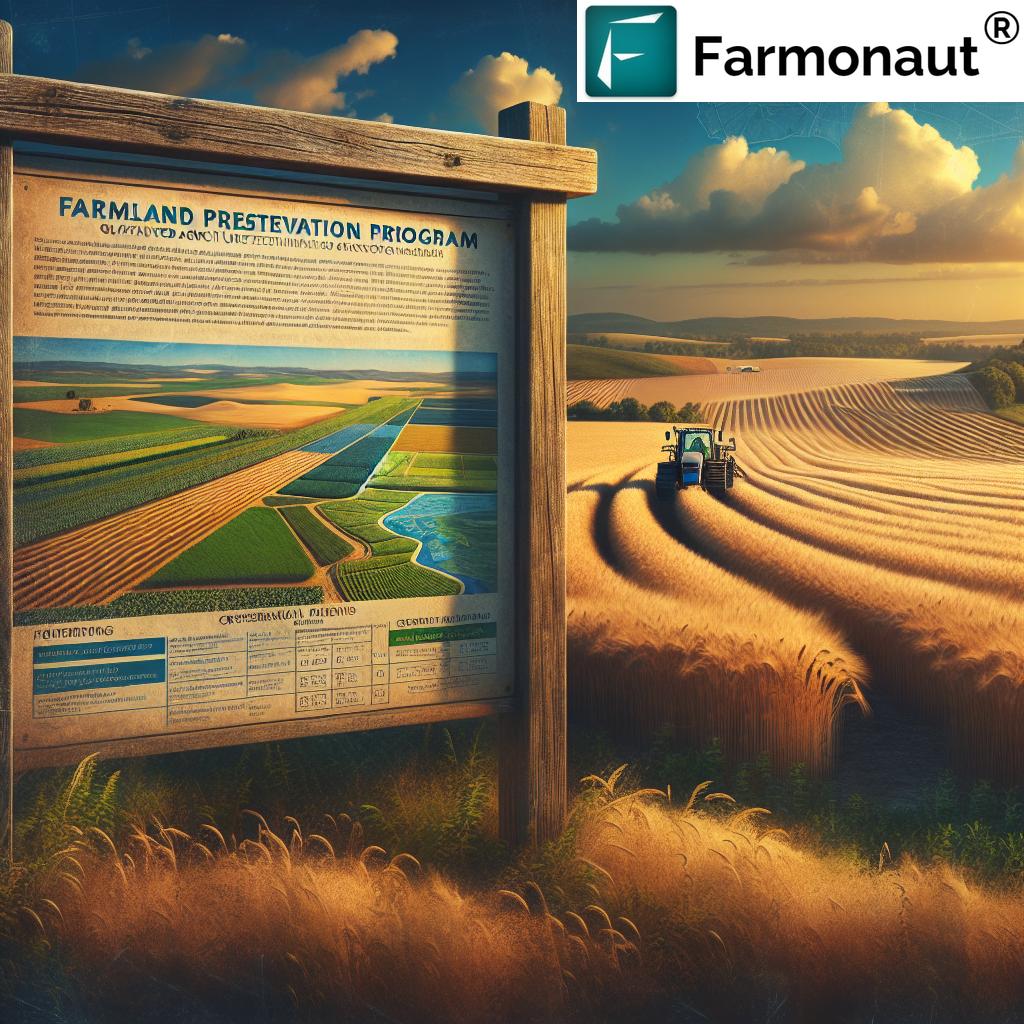Wildfire Season in Oregon: 7 Powerful Tips for Community Safety
“Oregon experienced over 2,200 wildfires in 2023, burning more than 190,000 acres statewide.”
Table of Contents
- Understanding the Wildfire Season in Oregon
- Community Wildfire Safety – Our Shared Responsibility
- 7 Powerful Tips for Community Wildfire Safety
- 1. Create and Maintain Defensible Space
- 2. Harden Your House and Outbuildings
- 3. Strengthen Community Communication Systems
- 4. Practice Wildland Fire Situational Awareness
- 5. Prepare for Wildfire Evacuation
- 6. Reduce Risk with Utility Wildfire Safety Measures
- 7. Work Together for Ongoing Risk Mitigation and Resilience
- Wildfire Preparedness Actions Table
- Farmonaut Solutions for Wildfire Risk and Environmental Stewardship
- Frequently Asked Questions
- Final Thoughts
Understanding the Wildfire Season in Oregon
Each wildfire season in Oregon brings with it a heightened sense of urgency and collective responsibility. From the foothills of Hood River to the lush forests surrounding our communities, the threat of wildfires has become more pronounced due to the growing risk of extreme weather events in the Northwest. Typically starting in June, when dry air and rising temperatures prime our forests and wildlands for ignition, the season can extend into August and even later, with smoke from wildfires Oregon often blanketing broad swaths of the state.
Fires in Oregon are not isolated incidents—they’re part of a broader pattern affecting the entire Pacific Northwest and even the West and United States at large. As Oregonians, it’s crucial for us to stay updated and prepared. Whether we’re living in Hood River, near forested areas outside the cities, or communities still recovering from disasters like those in July 2020, we recognize the vital importance of community wildfire safety.
In recent years, high-profile events (such as the 2020 wildfires where electrical equipment operated by Pacific Power initially drew scrutiny from the state forestry department) have underscored a simple truth: no single group, utility, or agency can go it alone. Instead, we must work as an interconnected community, focusing on both personal household actions and larger-scale collaborative measures.
“Up to 90% of wildfires in Oregon are caused by human activity, highlighting the need for community preparedness.”
Community Wildfire Safety – Our Shared Responsibility
As homeowners and Oregonians, we are part of communities spread across forest and wildland areas. Many of us recall summers when the sky would burn red with smoke from wildfires Oregon-wide. While organizations like Pacific Power and the Oregon Forestry Department focus on utility wildfire safety measures and system upgrades, it is up to all of us to stay vigilant and proactive.
Our goal here is to outline the most impactful and practical steps we can take this season—whether we’re in a high-risk territory, a forested area, or a riverside community—to decrease wildfire risk and foster a resilient, prepared neighborhood.
7 Powerful Tips for Community Wildfire Safety and Preparedness in Oregon
Our 7 tips address everything from forest fire prevention to improved situational awareness, so we can collectively mitigate wildfire risk and safeguard lives, homes, and the environment throughout the 2024 wildfire season in Oregon. Each tip incorporates proven wildfire preparedness for homeowners and reflects the best advice from recent Pacific Power community forums, the Oregon Forestry Department, and sustainability experts.
- Create and Maintain Defensible Space
- Harden Your House and Outbuildings
- Strengthen Community Communication Systems
- Practice Wildland Fire Situational Awareness
- Prepare for Wildfire Evacuation
- Reduce Risk with Utility Wildfire Safety Measures
- Work Together for Ongoing Risk Mitigation and Resilience
1. Create and Maintain Defensible Space
Defensible space is the buffer we create between our house or structure and the surrounding grass, trees, shrubs, or any wildland area near our home. This space slows the spread of wildfire to our property. According to environmental experts and the Oregon Department of Forestry, defensible space can reduce the likelihood of home ignition by up to 35%.
Key Actions for Defensible Space:
- Keep lawns mowed low and well-watered, particularly as July and August approach.
- Remove dry grass, leaves, needles, and any flammable debris within at least 30 feet of your house.
- Prune tree limbs up to 6-10 feet above the ground and away from the roof.
- Clear water features (ponds, pools) to act as natural fire breaks where possible.
- Move combustible storage (wood piles, propane tanks) at least 30 feet from your house.
- If you grow crops near your home, monitor their dryness and health, which can be supported by Farmonaut’s real-time satellite crop monitoring for optimal irrigation and risk reduction.
2. Harden Your House and Outbuildings Against Fire
‘Hardening’ means making our house, sheds, and outbuildings more resistant to ember storms and direct flames. In the Pacific Northwest, flying embers can travel miles ahead of an active wildfire, igniting structures in seemingly low-risk areas.
How to Harden Your Home:
- Install fine mesh screens (1/8-inch) over vents and eaves to block embers.
- Upgrade to fire-resistant roofing, siding, and windows where possible.
- Keep roofs and gutters clean from pine needles, leaves, and other debris—especially after strong winds or storms.
- Seal gaps and repair damaged siding or roofing materials promptly.
- Install spark arresters in chimneys and stovepipes.
- Review your outbuildings for the same vulnerabilities, particularly pump houses or remote storage sheds.
Emphasizing these forest fire prevention tips for all our structures, especially in forest and wildland areas, helps protect both individual homeowners and our entire community.
3. Strengthen Community Communication Systems
Timely, accurate communication is a critical advantage during wildfire emergencies. Recent community forums in Hood River and statewide have highlighted the importance of keeping everyone informed and ready for quick action.
- Sign up for local emergency alert systems and encourage your neighbors to do the same (check county, city, and state-level services).
- Use neighborhood messaging apps or local social media groups to quickly distribute news about extreme weather risk northwest, fire locations, and evacuation orders.
- Attend Pacific Power or Forestry Department forums and share takeaways—these updates help us all stay current on systems and response protocols.
- Prepare communication plans for phone tree systems, especially if cellular or internet service becomes unreliable.
- Know where to access timely weather and smoke information. For advanced weather and situational awareness, consider using satellite-powered platforms such as Farmonaut for integrated weather and risk prediction.
4. Practice Wildland Fire Situational Awareness
Wildland fire situational awareness means understanding our vulnerability and recognizing triggers that warn us when wildfires are imminent. Being aware gives us precious time to act, and is especially important for those living near forests, rivers, or in rural parts of Oregon.
How to Stay Aware:
- Monitor weather forecasts. Prolonged dry, hot, and windy spells are signals for increased fire risk.
- Track smoke conditions. Smoke from wildfires Oregon can drift for miles, signaling active fires even before local alerts are issued.
- Use technology for satellite fire alerts and real-time risk mapping: Farmonaut’s satellite tools can visualize fire proximity, drought conditions, and forest dryness for fast decision-making.
- Scout escape routes before danger is near—know at least two ways out of your area and practice evacuation drills with your family and community groups.
Being alert and responsive to environmental cues is one of the simplest yet most powerful ways to stay safe during the season.
5. Prepare for Wildfire Evacuation
Even the most robust prevention can’t eliminate wildfire risk entirely. Preparing for wildfire evacuation is about giving ourselves peace of mind and maximizing our ability to leave quickly and safely when it matters most.
Evacuation Preparation Checklist:
- Pack an emergency kit containing food, water, medications, vital documents, cash, flashlights, and phone chargers.
- Preload vehicles with supplies during high alert season (e.g., July through August).
- Create a family evacuation plan, including rendezvous points, contact lists, and backup transportation options.
- Arrange for the safe evacuation of pets and livestock.
- Keep a list of what to grab if time allows: family photos, heirlooms, and essential electronics.
- Practice combining your kit with “grab-and-go” bags for faster movement.
- Develop communication signals with neighbors to confirm everyone is out and accounted for.
Preparing for wildfire evacuation is not a one-time event, but a regular household and community exercise.
6. Reduce Risk with Utility Wildfire Safety Measures
The role of utility companies—like Pacific Power—in reducing wildfire risk is rapidly evolving. In recent forums, Pacific Power meteorologists and state forestry department officials stressed the importance of upgraded electrical systems, proactive monitoring, and rapid response to extreme weather risk Northwest-wide.
Community Utility-Focused Actions:
- Understand your utility’s Public Safety Power Shutoff (PSPS) protocols for your area.
- Report any downed power lines, damaged equipment, or vegetation near utility poles to Pacific Power or your local provider.
- Evaluate backup power sources during potential outages, especially if you rely on electric well pumps for water.
- Encourage neighbors to attend utility forums for updates on engineering upgrades, vegetation management, and emergency communication plans.
- Advocate for and implement microgrids, battery backups, or solar power where feasible for critical infrastructure—especially in rural communities or those with a history of wildfires.
- Explore carbon footprinting options for local farms and community facilities. Farmonaut’s Carbon Footprinting Solutions track and minimize emissions from generators and ag operations, aligning utility-based wildfire prevention with sustainability goals.
Utility wildfire safety measures at both household and neighborhood levels are crucial for reducing the total wildfire impact on our community.
7. Work Together for Ongoing Risk Mitigation and Resilience
The reality of wildfire season in Oregon and throughout the Pacific Northwest is that surviving—and even thriving—depends on our willingness to work together. Ongoing resilience and risk mitigation are not single steps, but long-term commitments.
Ways Our Community Can Collaborate:
- Organize neighborhood clean-up and tree-trimming events to maintain defensible spaces and spot potential hazards.
- Create shared equipment pools (hoses, pumps, personal protective gear) for emergency use.
- Form volunteer fire watch groups during the season peak.
- Coordinate with local government, forestry department, and utility representatives through regular forums and workshops.
- Use Farmonaut’s satellite-based verification tools to secure community crop insurance or support local agribusinesses with up-to-date risk data.
- Support and implement blockchain-based traceability for community agricultural products—building transparency, supporting local farms, and deterring fraud as we rebuild after fire disasters.
Wildfire Preparedness Actions Table
| Safety Tip | Description | Estimated Risk Reduction (%) | Recommended Implementation Timeframe |
|---|---|---|---|
| Create Defensible Space | Clear flammable materials, maintain vegetation, and create a buffer zone around your house. | 35% | Before Wildfire Season (May–June); Ongoing Maintenance |
| Harden Your Home | Install mesh screens, use fire-resistant materials, and regularly inspect/maintain structures. | 30% | Before Fire Season; Review Annually |
| Community Communication Systems | Set up local alerts, share emergency plans, and join wildfire preparedness forums. | 20% | Immediate; Ongoing Updates |
| Situational Awareness | Monitor weather, smoke, and evacuation alerts; use risk prediction tools. | 25% | Throughout Wildfire Season |
| Evacuation Preparedness | Pre-pack emergency kits, plan routes, and conduct evacuation drills. | 18% | Before and During Fire Season; Refresh Monthly |
| Utility Wildfire Safety Measures | Report line hazards, understand power shutoffs, and implement backup systems. | 15% | Before and During Fire Season |
| Work Together for Resilience | Join neighborhood clean-ups, advocate for sustainable solutions, and use community insurance/blockchain traceability tools. | 40% | Ongoing Community Commitment |
Farmonaut Solutions for Wildfire Risk, Environmental Stewardship, and Community Sustainability
Modern challenges—like wildfires and extreme weather risk northwest—demand innovative tech-driven responses. Farmonaut, a pioneering agricultural technology company, is transforming the way farmers, homeowners, agribusinesses, and whole communities monitor, prepare for, and mitigate wildfire risk in Oregon and beyond.
Farmonaut’s Platform—Core Features for Resilience and Sustainability
- Satellite-Based Crop Health Monitoring: Access NDVI vegetation health maps, soil moisture trends, and drought warnings in near real time. Helps communities optimize irrigation and resource use during drought, lowering fire risk.
- AI Advisory System (Jeevn): Get personalized risk alerts, weather forecasts, and expert crop management tips—vital for those living or farming at the wildland interface. AI-driven advice enhances planning for the dry season.
- Blockchain-based Traceability Tools: Secure your area’s farm-to-table or forest products with transparent traceability (Product Traceability), essential in recovery and rebuilding phases post-wildfire.
- Fleet and Resource Management: Empower communities and agribusinesses to coordinate fleet and equipment usage for emergency preparedness via Farmonaut Fleet Management.
- Carbon Footprinting: Quantify and reduce emissions from community generators, agricultural practices, and local businesses (Carbon Footprinting Platform), making wildfire mitigation efforts more sustainable.
- Crop Loan and Insurance Verification: Satellite-backed verification (Crop Loan & Insurance Solutions) facilitates access to emergency loans or rebuilding funds for affected homeowners and farms post-disaster.
- API Integration and Developer Access: Integrate Farmonaut’s satellite and weather data API (Farmonaut API). For detailed implementation guides, developers can consult the API Developer Docs.
- Scalable Access: Whether you’re a smallholder or a public agency, use Farmonaut Large-Scale Farm Management to coordinate landscape-wide risk reduction or get the Farmonaut App for mobile and browser use.
By equipping ourselves with precision data and actionable intelligence, we amplify both individual and collective power—helping our communities thrive in spite of increased risk, seasonal fires, and evolving climate challenges.
FAQs – Wildfire Season in Oregon and Community Safety
1. When does wildfire season in Oregon begin and end?
Wildfire season in Oregon typically runs from June through August and sometimes into early fall. However, risk can extend outside these months during periods of extreme weather.
2. What is the role of the utility Pacific Power in wildfire safety?
Pacific Power, along with other utilities, has strengthened systems and infrastructure, adopted advanced weather forecasting, and conducts community forums to share knowledge about utility wildfire safety measures—all aimed at mitigating fire risk in vulnerable areas.
3. What should homeowners living in wildland or forest areas in Oregon do first?
Start by creating defensible space around your property, hardening your home against embers, and joining or following local emergency alert systems (KPTV and county notifications). Stay connected with neighbors and utility providers.
4. How can communities improve situational awareness for wildfires?
Communities should regularly check weather and fire risk updates, use satellite monitoring solutions (such as Farmonaut), practice evacuation drills, and attend local forums to stay informed.
5. Why is human activity a leading cause of wildfires in Oregon?
Most wildfires are sparked by discarded cigarettes, campfires, power equipment, or improper burning. This means community education, preparedness, and vigilance have a major impact in reducing risk.
6. How can I get advanced wildfire monitoring on my mobile or desktop?
Use the Farmonaut App for instant access to crop health maps, drought data, and wildfire risk notifications for your area.
7. Can blockchain and satellite data protect our local farm supply chain?
Yes — Farmonaut’s blockchain traceability solutions ensure that crops and products are authenticated, tracked, and recoverable after fire or disaster, enhancing supply chain transparency and security.
8. What types of wildfire support or insurance does Farmonaut offer?
Farmonaut offers crop loan and insurance verification services using satellite data, helping farms and agribusinesses access support faster and with reduced fraud risk.
9. Where can I learn about the latest developments in wildfire safety technology?
Regularly check Farmonaut’s website and join local state forestry forums and utility community safety events for updated guidance.
Final Thoughts: Building Safer, Sustainable Communities in the Face of Wildfire Risk
As we look ahead to another wildfire season in Oregon, let’s remember: safety is a shared journey. By using these 7 powerful tips, embracing new monitoring and communication technologies, and working diligently together as community members, we can protect our homes, environmental resources, and each other against the ever-growing wildfire risk in our beautiful state.
For every homeowner, agricultural operator, and concerned neighbor, preparation and awareness are our most vital tools.
Stay alert. Stay connected. Stay resilient. And let’s make this wildfire season a testament to the strength and unity of Oregon’s communities.


